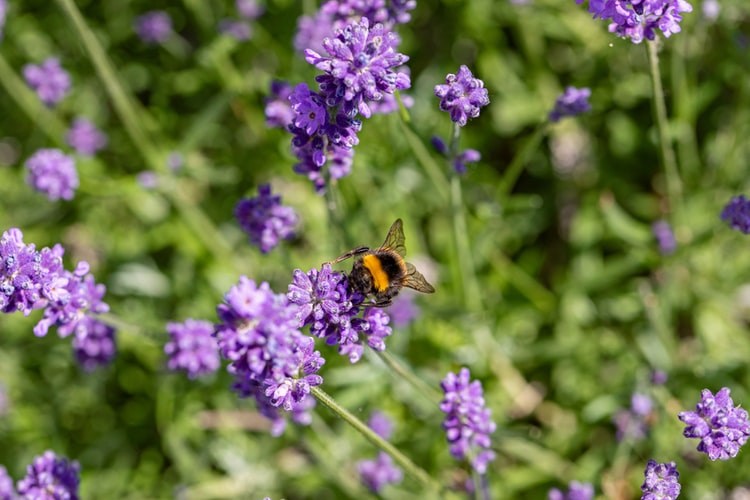The common agricultural policy (CAP) was not effective in reversing the decline in biodiversity, according to a new report by the European Court of Auditors (ECA). The report arrives timely to the new EU Biodiversity Strategy for 2030.
The auditors found gaps and shortcomings in the current biodiversity strategy dating from 2011 and its coordination with the common agricultural policy (CAP). The tracking of CAP spending on biodiversity is unreliable and most CAP funding has little positive impact on it.
“The CAP has so far been insufficient to counteract declining biodiversity on farmland, a major threat for both farming and the environment”, summarised Viorel Ștefan, the ECA Member responsible for the report, at a virtual press conference last week (5 June).
The overall question in the performance audit report is whether the CAP had contributed positively to maintaining and enhancing biodiversity. The auditors visited five member states with different biodiversity, agricultural and landscape profiles (Cyprus, Germany, Ireland, Poland and Romania).
The data collection included farm visits and discussions with farmers and a survey of national and regional authorities of nine other member states/regions. In addition, ECA organised a panel discussion on farmland biodiversity with scientific, policy and administrative experts in this area.
At the Commission, two Directorates-General (DG Environment and DG Agriculture and Rural Development), share the responsibly for EU’s biodiversity policy. This might explain the lack of coordination and why ambitious targets have been watered down in the legislative process.
The EU’s role in protecting biodiversity is crucial, says the report, as EU sets environmental standards and co-finances most of member states’ agricultural spending. The overall responsibility, however, lies on the member states in complying with the standards.
Member states are required to develop and oversee efforts to achieve the targets. According to the audit, in most cases, paying agencies check only between 1 % and 2 % of farms subject to a specific standard and impose penalties for around 1 % of those checked.
The Commission has estimated that the biodiversity funding under CAP will be €66 billion or 77 % of total biodiversity spending, over the current 2014-2020 budget period. In 2019 and 2020, the EU has planned to spend around 8 % of its total budget on biodiversity). The CAP share of this is €10.3 billion per year.
Mix results
Despite the ample funding of biodiversity measures, the results are at best mixed, depending on the funding instruments in the CAP. The auditors doubt also the accuracy of the budget figures as they are based on coefficients that overstate the contribution of some measures to biodiversity.
Although some direct payment requirements, notably “greening” and “cross-compliance”, have the potential to improve biodiversity, the Commission and member states favoured low-impact options.
The aim of “greening” is to provide rewards for crop rotation and the protection of permanent pasture, green cover, ecological set-aside and Natura 2000 areas but its potential was underdeveloped. Rural development programmes have greater biodiversity potential than direct payments, according to the auditors.
The auditors recommend the Commission to better coordinate the new biodiversity strategy for 2030 (“Bringing nature back into our lives”), enhance the contribution of direct payments and rural development to farmland biodiversity, track budget spending more accurately and develop reliable indicators to assess CAP impact.
The new strategy, which was announced on 20 May, was not part of the audit and ECA declined to comment on it. A draft of the audit report was shown to the Commission already in January and the Commission, while questioning some of the conclusions in the report, has accepted all audit recommendations.
“The Commission has seen our emerging finding,” a senior auditor added. “I feel that our work has already had an impact on the Commission’s new strategy.” The recommendations are general in nature, and the Commission will have to fill in the details to improve the complex funding arrangements in the CAP.
Asked by The Brussels Times about its response to the audit, a Commission spokesperson replied that it considers the audit a valuable contribution to the Commission’s work on developing the new strategy. “The shortcomings identified in the audit will be addressed in the future CAP as well as in the implementation of the biodiversity strategy.”
Loss of biodiversity
The global decline in biodiversity is widely recognised, according to the audit. In 2019, the Intergovernmental Science-Policy Platform on Biodiversity and Ecosystem Services (IPBES) warned that the decline is at rates unprecedented in human history – around one million animal and plant species worldwide are currently threatened with extinction.
In January 2020, the World Economic Forum classified the loss of biodiversity and collapse of ecosystems as one of the top five threats facing the world, in both likelihood and impact.
In Europe, the number and variety of species on farmland have declined over many years. Since 1990, populations of farmland birds and grassland butterflies – a good indicator of changes – have decreased by 34 respectively 39 %.
The influence of the CAP on the situation of farmland biodiversity is not known for the EU as a whole but in countries where intensive farming is common, scientists see a need to re-establish biodiversity in areas where species and rich natural habitats have disappeared in recent decades.
The European Environment Agency (EEA) found in 2019 that agricultural intensification remains one of the main causes of biodiversity loss and ecosystem degradation in Europe. In many areas of Europe, intensification has transformed formerly diverse landscapes, consisting of many small fields and habitats, into uniform unbroken terrain managed with large machines and a highly reduced work force.
M. Apelblat
The Brussels Times

